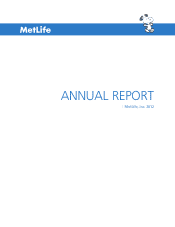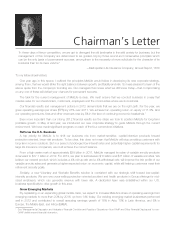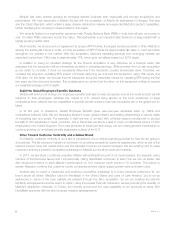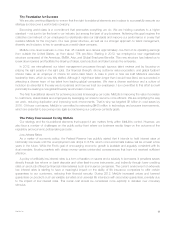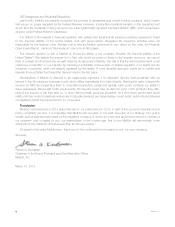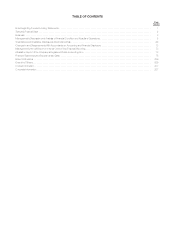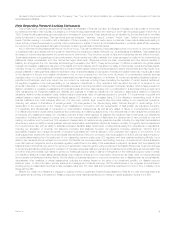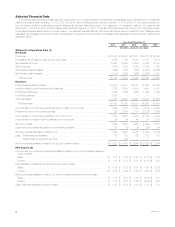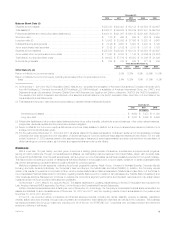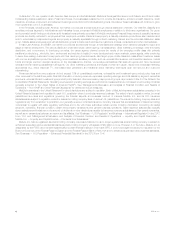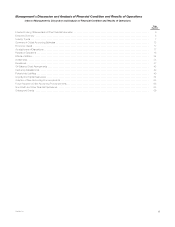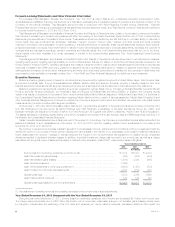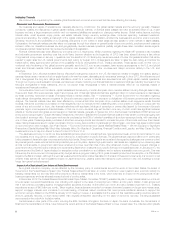MetLife 2012 Annual Report Download - page 4
Download and view the complete annual report
Please find page 4 of the 2012 MetLife annual report below. You can navigate through the pages in the report by either clicking on the pages listed below, or by using the keyword search tool below to find specific information within the annual report.The Foundation for Success
We are also working diligently to ensure that the right foundational elements are in place to successfully execute our
strategy and become a world-class company.
Becoming world-class is a commitment that permeates everything we do. We are holding ourselves to a higher
standard – not just to be the best in our industry but among the best of any business. Achieving this goal requires the
collective commitment of our employees to relentlessly raise our standards and improve our performance in a way that
sustains MetLife for the long term. Our new global structure, as well as our stronger approach to talent management,
diversity and inclusion, is key to operating as a world-class company.
MetLife now does business in more than 45 markets and derives approximately one-third of its operating earnings
from outside the United States, up from about 17% pre-Alico. Starting in 2012, we employed a new organizational
structure composed of the Americas, EMEA, Asia, and Global Employee Benefits. This new structure has helped us to
break down barriers and facilitate the sharing of ideas, best practices and talent across the enterprise.
In 2012, we strengthened our talent management processes through rigorous talent reviews and by focusing on
placing the right people in the right jobs. Our financial strength, strong customer value proposition, and global footprint
should make us an employer of choice for world-class talent. A case in point is how we built MetLife’s executive
leadership team, which is now fully staffed. Although it might have taken longer than I would have liked, we succeeded in
attracting a diverse team of top talent from leading global companies. We view a diverse workforce and a culture of
inclusion as essential to the way we do business and how we treat our employees. I am committed to this effort and will
personally be leading a new global Diversity and Inclusion Council.
The final foundational element for achieving success is leveraging our scale. MetLife is improving the value it provides
to customers, shareholders and employees by leveraging our scale to become more efficient. We are simplifying the way
we work, reducing duplication and improving work environments. That is why we targeted $1 billion in cost saves by
2016. Of those cost saves, MetLife is committed to reinvesting $400 million in technology and process improvements,
which are essential to becoming more agile and achieving our customer centricity goals.
The Policy Environment Facing MetLife
Our strategy and the foundational elements that support it are matters firmly within MetLife’s control. However, we
also face a number of challenges on the public policy front where our business results hinge on the outcome of the
regulatory and economic policymaking process.
Low Interest Rates
As a matter of economic policy, the Federal Reserve has publicly stated that it intends to hold interest rates at
historically low levels until the unemployment rate drops to 6.5%, which most economists believe will be at least a few
years in the future. While the Fed’s goal of encouraging economic growth is laudable and arguably consistent with its
dual mandate, flooding markets with cheap money carries unintended consequences that have not received sufficient
attention.
A policy of artificially low interest rates is a form of taxation on savers and a subsidy to borrowers. It penalizes savers
directly through low returns on bank deposits and other fixed-income instruments, and indirectly through lower crediting
rates on products offered by financial intermediaries such as insurance companies. The current environment of extremely
low interest rates is starting to have a meaningful impact on the ability of life insurance companies to offer certain
guarantees to our customers, reducing their financial security. During 2012, MetLife increased prices and lowered
guarantees on products such as variable annuities and universal life insurance with secondary guarantees, primarily due
to the impact of low interest rates. This social cost should be considered more explicitly in debates over monetary
stimulus.
MetLife, Inc. iii

